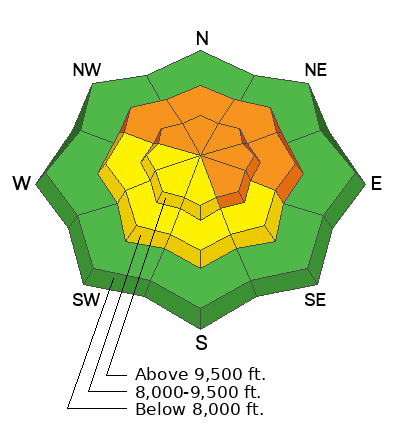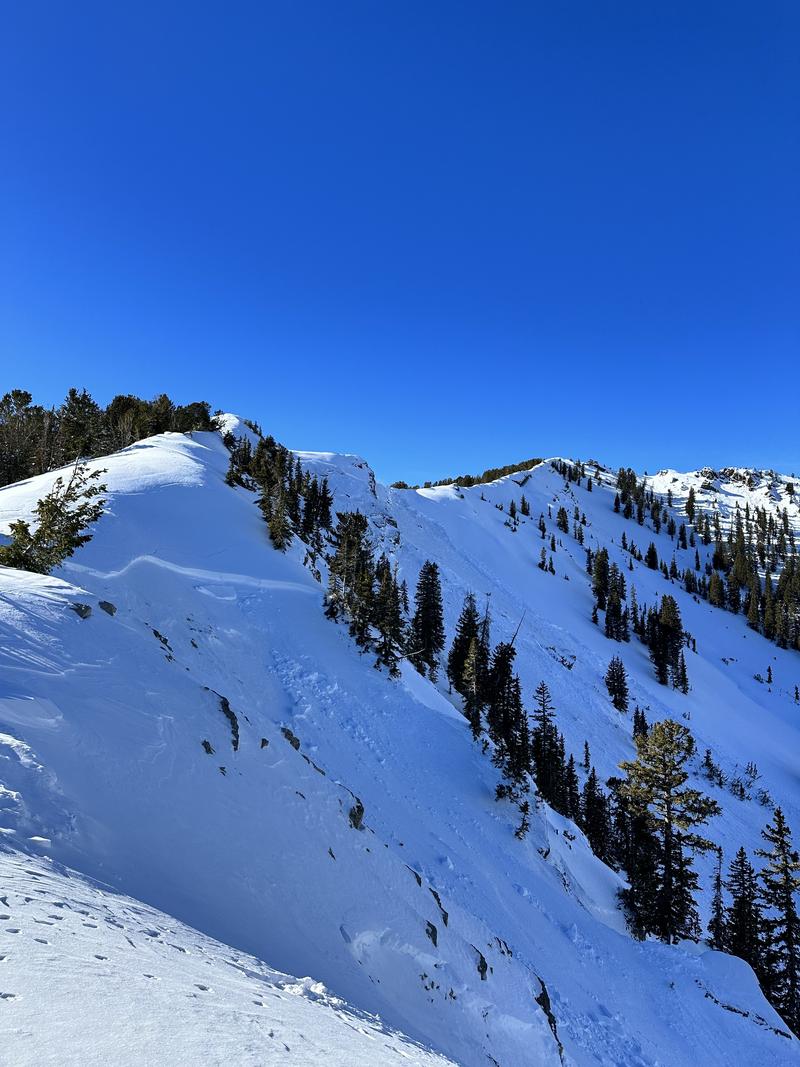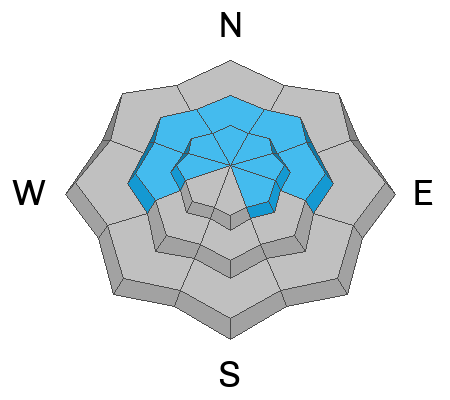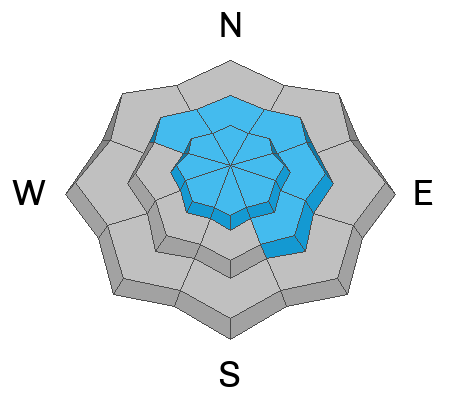Forecast for the Provo Area Mountains

Issued by Nikki Champion on
Wednesday morning, December 6, 2023
Wednesday morning, December 6, 2023
Avalanche danger is CONSIDERABLE on steep upper-elevation slopes facing west through north to southeast and on steep mid-elevation slopes facing west through north to east. Natural and human-triggered avalanches may break 2-5 feet deep and span several hundred feet wide, failing on a persistent weak layer of faceted snow. There is a MODERATE danger on the remaining upper and mid-elevation slopes. The low-elevation slopes have a LOW danger.
The north-facing slopes harboring old, weak faceted snow surfaces are not to be messed with. Avoid slopes 30° degrees and steeper at mid and upper elevations where this weak snow exists.

Low
Moderate
Considerable
High
Extreme
Learn how to read the forecast here









